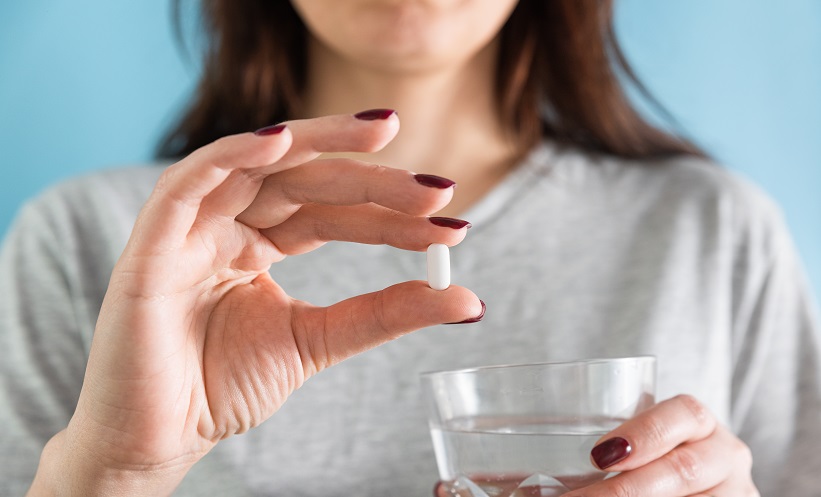A Message for World Diabetes Day
![]()
Written by Dr Muthuswamy Balasubramanyam | Dean of Research Studies and Senior Scientist, Madras Diabetes Research Foundation, Chennai, India
![]()
The recently released Eighth Edition of the International Diabetes Federation (IDF) Atlas reported that 425 million adults worldwide have been diagnosed with diabetes; India alone is home to 73 million adults with diabetes.1 What can we do to stop this ever-growing health problem? This year’s World Diabetes Day (14th November 2017) had the theme of ‘Women and Diabetes: Our Right to a Healthy Future’ and it is here that we find an answer: “Want to defeat diabetes? […] Just take care of women all the time, with more attention during pregnancy,” said Dr Muthuswamy Balasubramanyam, Dean of Research Studies, Madras Diabetes Research Foundation, Chennai, India.2
World Diabetes Day: The Background
The 14thof November is observed globally as World Diabetes Day, an event aimed at both raising the awareness of diabetes and calling for urgent action to tackle the diabetes pandemic. The date was chosen because it marks the birthday of Frederick Banting, who, along with Charles Best, is credited with the discovery of insulin. World Diabetes Day was created in 1991 by the IDF and the World Health Organization (WHO) in response to growing concerns about the escalating health threat posed bydiabetes. World Diabetes Day became an official United Nations (UN) Day in 2007 with the passage of a United Nations Resolution. This landmark resolution also recognised diabetes as: “A chronic, debilitating, and costly disease associated with major complications that pose severe risks for families, countries, and the entire world.”3 Until 2006, there was no global symbol for diabetes; however, following the United Nations World Diabetes Day Resolution, in 2007 a ‘blue circle’ logo was adopted, which is now the universally recognised symbol for the disease. The blue circle signifies the unity of the global diabetes community in response to the diabetes pandemic.
World Diabetes Day: The Theme
Since 1991 World Diabetes Day has been centred on a different theme each year; this year’s theme was: ‘Women and Diabetes: Our Right to a Healthy Future.’ The campaign aimed to promote the importance of affordable and equitable access to essential medicine and technology, self-management education, and the information required to achieve optimal diabetes outcomes and aid in the prevention of Type 2 diabetes mellitus in women.
Women Under Threat from Diabetes
There are currently >199 million women living with diabetes and this total is projected to increase to 313 million by the year 2040. Furthermore, two out of every five women with diabetes are of reproductive age, accounting for >60 million women worldwide. Diabetes is the ninth leading cause of death in women worldwide, causing 2.1 million deaths every year. Women with Type 2 diabetes mellitus are almost 10-times more likely to have coronary heart disease than those without the condition, and have an increased risk of early miscarriage or prenatal malformations.3 Therefore, all women with diabetes require affordable and equitable access to care and education to better manage their diabetes and improve their health outcomes.
Gestational Diabetes is an Alarming Health Burden in Pregnant Women
One in seven births are affected by gestational diabetes mellitus (GDM), a transient form of diabetes that occurs in certain women during their pregnancy. The IDF estimates that 16.2% of live births in 2015 saw the mother experience some form of hyperglycaemia during the pregnancy. Approximately half of women with a history of GDM go on to develop Type 2 diabetes mellitus within 5 to 10 years after delivery. Half of all cases of hyperglycaemia in pregnancy occur in women under the age of 30 and the majority of cases are in low and middle-income countries, where access to maternal care is often limited.4 With such a defined risk profile, pregnant women require improved access to screening, care, and education to achieve positive health outcomes for both mother and child.
“Diabetes Prevention is in your Mom’s Hands!”
One way to prevent diabetes is to take care of women during their pregnancy, aiming to prevent and treat GDM effectively; “diabetes prevention is in your mom’s hands!” suggests Balasubramanyam.2 The prevalence of GDM is increasing worldwide, especially in developing countries. In India, the prevalence of GDM is reported to range from 4–18%.5 It is crucial to detect GDM, as the condition is associated with a diverse range of adverse maternal and neonatal outcomes, therefore the consequences of this condition affect not only the mother but the offspring too, often manifesting at a later stage of their life. Research clearly indicates that the risk for diabetes is programmed in the mother’s womb itself.6
Type 2 diabetes mellitus prevention strategies must focus on maternal health, nutrition, and other factors affecting health before and during pregnancy, in addition to infant and early childhood nutrition. Antenatal care visits during pregnancy must be optimised for health promotion in young women and enable the early detection of diabetes and GDM.
Early Biomarkers to Predict as well as to Treat Gestational Diabetes Mellitus
“Both GDM and its progression to Type 2 diabetes mellitus could be potentially prevented by appropriate lifestyle modifications and medical management, but we need to identify the high-risk individuals,” noted Balasubramanyam.2 First-trimester biomarker discovery platforms appear to be promising for predicting the risk of GDM and are consequently expected to offer an extended ‘window of opportunity’ for preventative lifestyle changes and medical management. As research into these types of biomarker increases, the next challenge is to develop, validate, and adopt a robust and reliable single or panel of biomarkers that could predict GDM.
Mothers can have a huge influence over the long-term health status of their children. Research has shown that when mothers are granted greater control over resources, they allocate more to food, children’s health, nutrition, and education7. Parents are the gatekeepers of household nutrition and related lifestyle habits and therefore they form the first line of defense against the development of diabetes. By making healthy food choices and providing parental care, primary care-givers can prevent their child from leading an unhealthy lifestyle and thereby aid in the prevention of diabetes.
References
- International Diabetes Federation Atlas. IDF Diabetes Atlas, Eighth Edition. 2017. Available at: https://www.idf.org. Last accessed: 28 November 2017.
- Balasubramanyam M. Emerging biomarkers of enterprising challenges to predict as well as treat GDM. RSSDI 45th Annual Conference, 4 November, 2017.
- International Diabetes Federation. IDF Diabetes Atlas, Fourth Edition. 2007. Available at: http://www.diabetesatlas.org/resources/previous-editions.html. Last accessed: 28 November 2017.
- International Diabetes Federation. World Diabetes Day. 2017. Available at: https://www.idf.org/our-activities/world-diabetes-day/wdd-2017.html. Last accessed: 28 November 2017.
- Mithal A et al. Gestational diabetes in India: Science and society. Indian J Endocrinol Metab. 19(6):701-4.
- Portha B et al. Early-life origins of Type 2 diabetes: Fetal programming of the beta-cell mass. Exp Diabetes Res. 2011;2011:105076.
- Brunson EK et al. Women’s autonomy and its relationship to children’s nutrition among the Rendille of northern Kenya. Am J Hum Biol. 2009;21(1):55-64.







